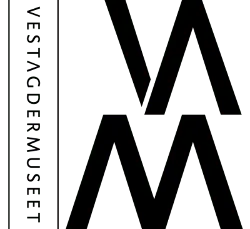Welcome to the exhibition
THE CITY’S MOST BEAUTIFUL GARDEN, BØRSPARKEN
The exhibition is about Børsparken where two of the museum’s buildings, Børspaviljongen and Børskiosken, stood.
The Børskiosken was restored in the summer of 2023
The exhibition is produced by conservator Øivind Rogstad at the Kristiansand museum.
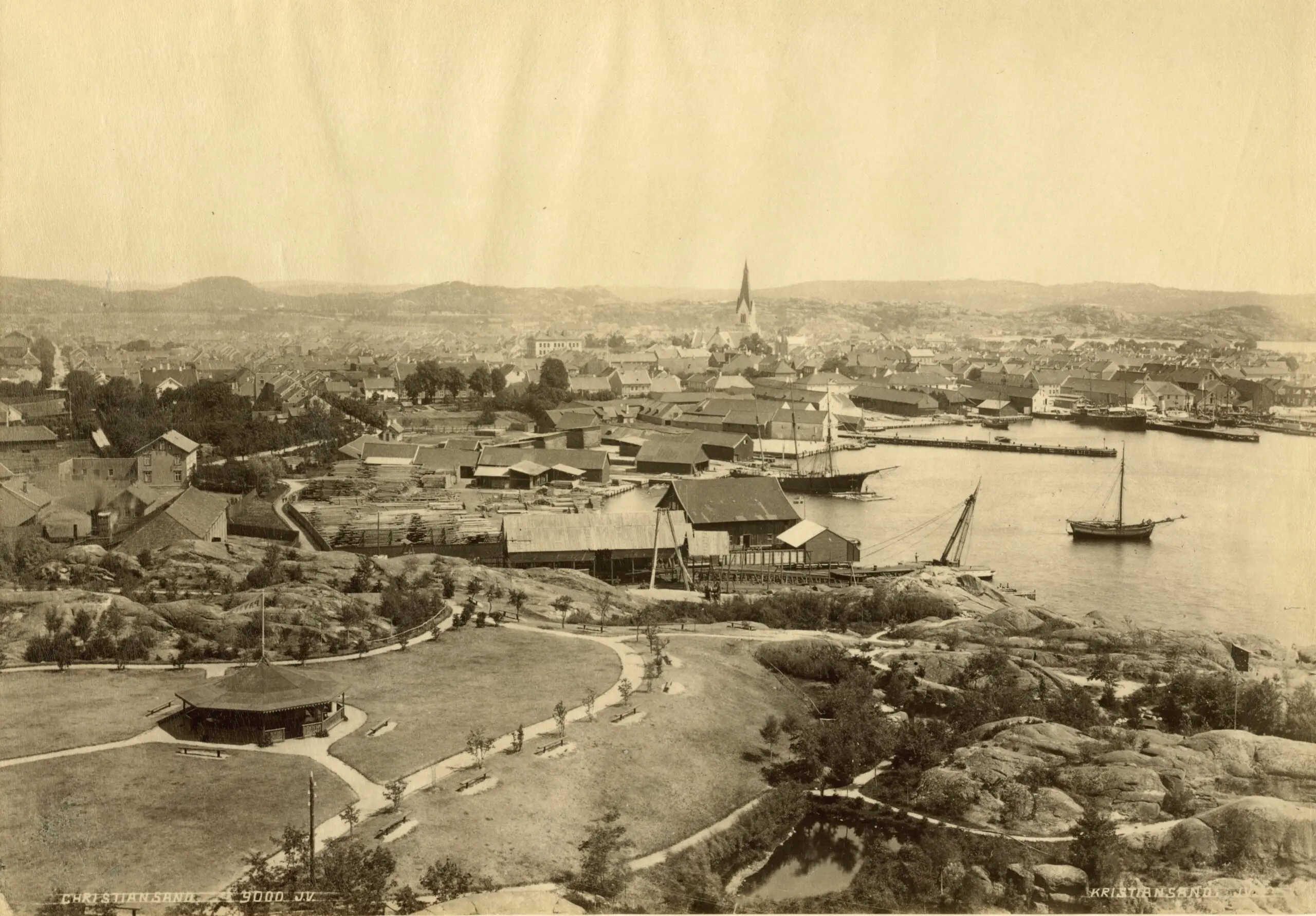
«Strandgatene», (The beach streets)
In 1890, Kristiansand was no bigger than what is today known as Kvadraturen. The town was dominated by a low wooden housing development, with only a couple of brick buildings such as the cathedral. Along “Strandgatene” (The beach streets) stood large, beautiful houses owned by the rich shipowners in of the city, from there it was a short walk to the warehouses and wharves. There, the sailing ships stood ready to sail out with timber, which was still an important source of income for the town. Between the house and the warehouses, several of the shipowners had created beautiful gardens, and some set up small gazebos or pavilions in their gardens where they could relax.
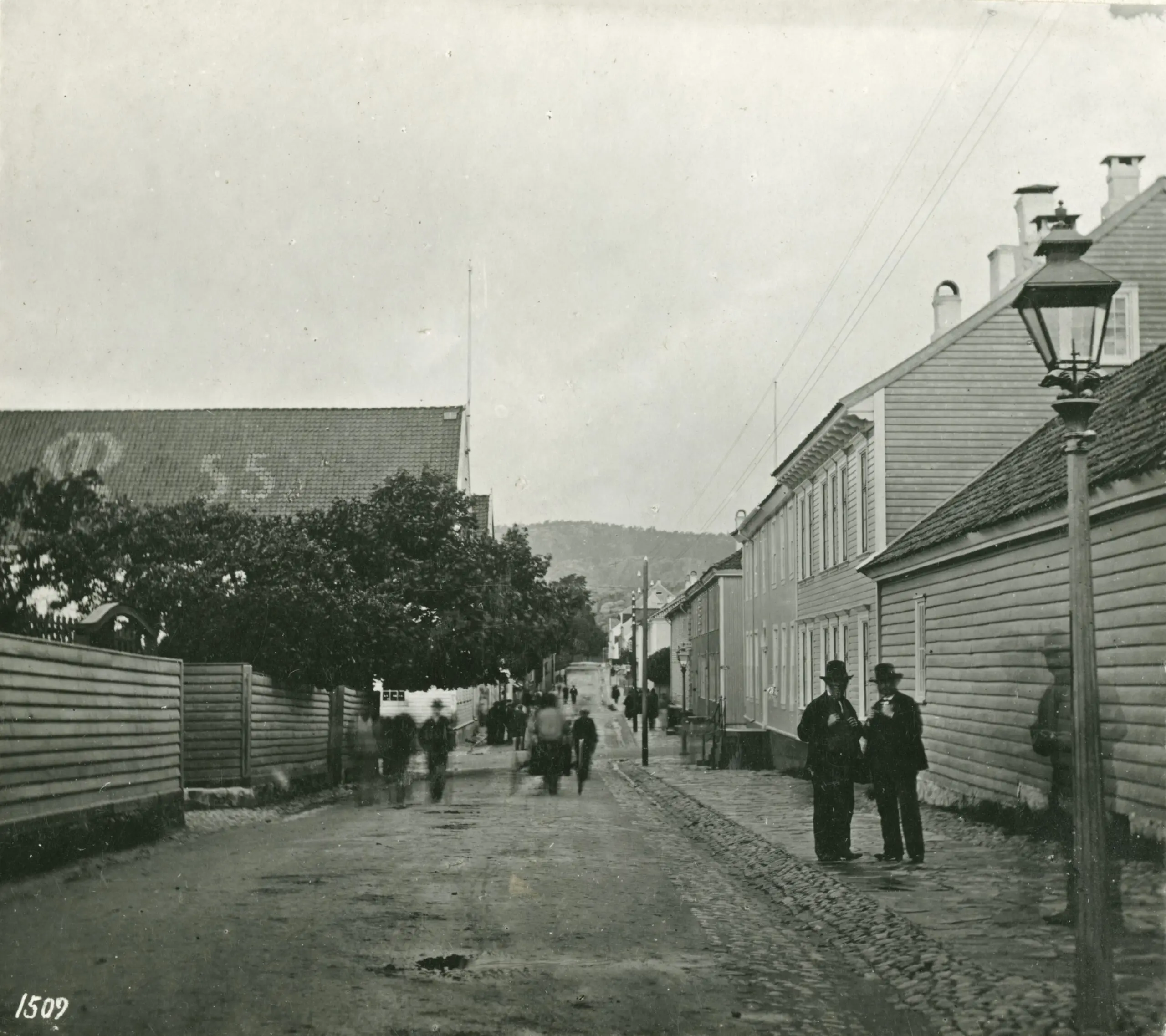
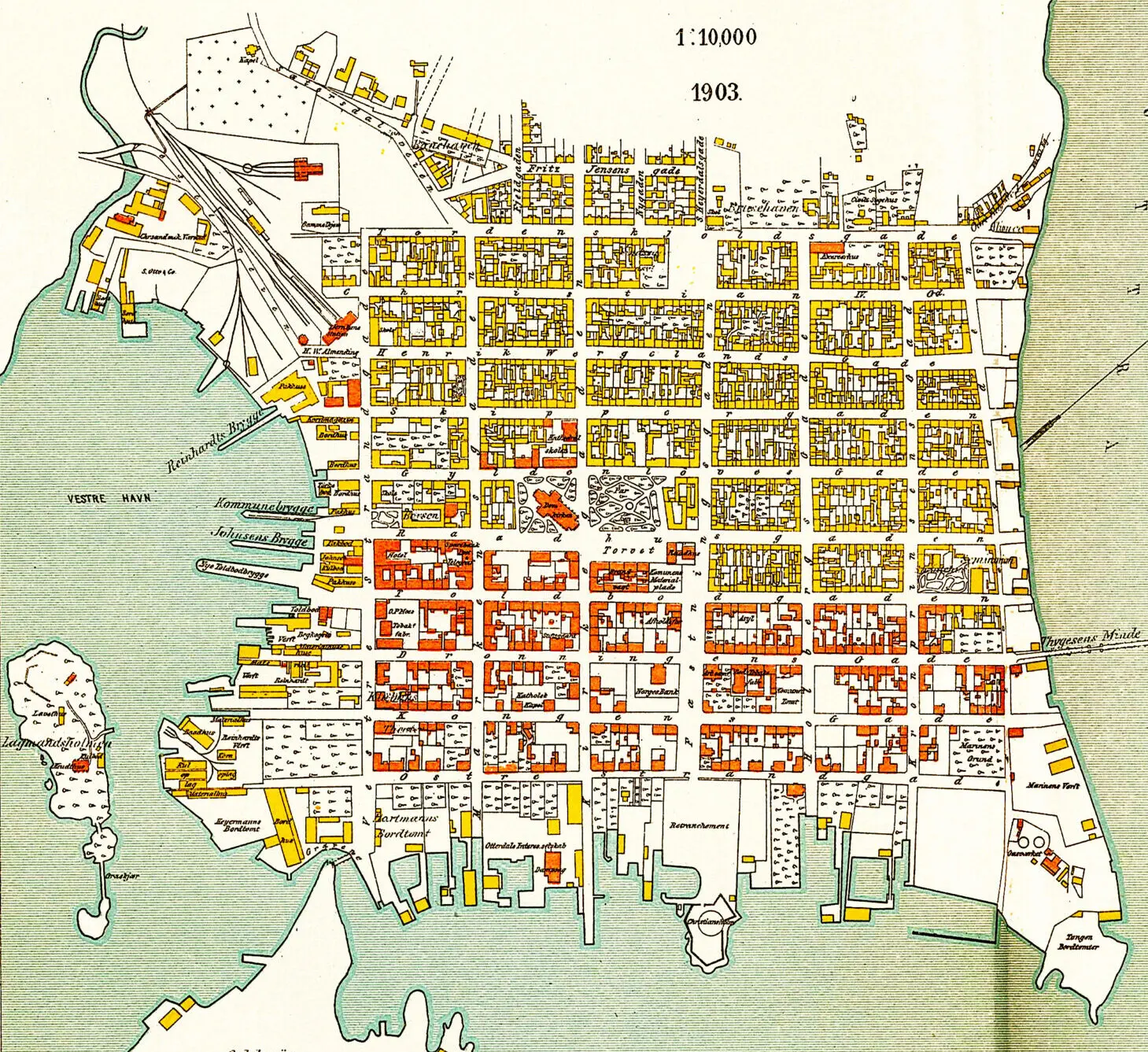
From garden to park
Consul Christian Matthiessen lived at the intersection between “Vestre Strandgate” (The Western beach street) and «Rådhusgata» (City Hall Street) from 1821 until his death in 1876. He had a beautiful garden in front of the house. There had previously been a house there, but it burned down in the town fire in 1734 and was not rebuilt. He had a tall wooden fence around the garden, thus ordinary people could`nt see much of the garden. In 1886, the Kristiansand Stock exchange committee bought the property and chose to turn the garden into a public park. This is the only private plot of land in Kristiansand that has become a public park.
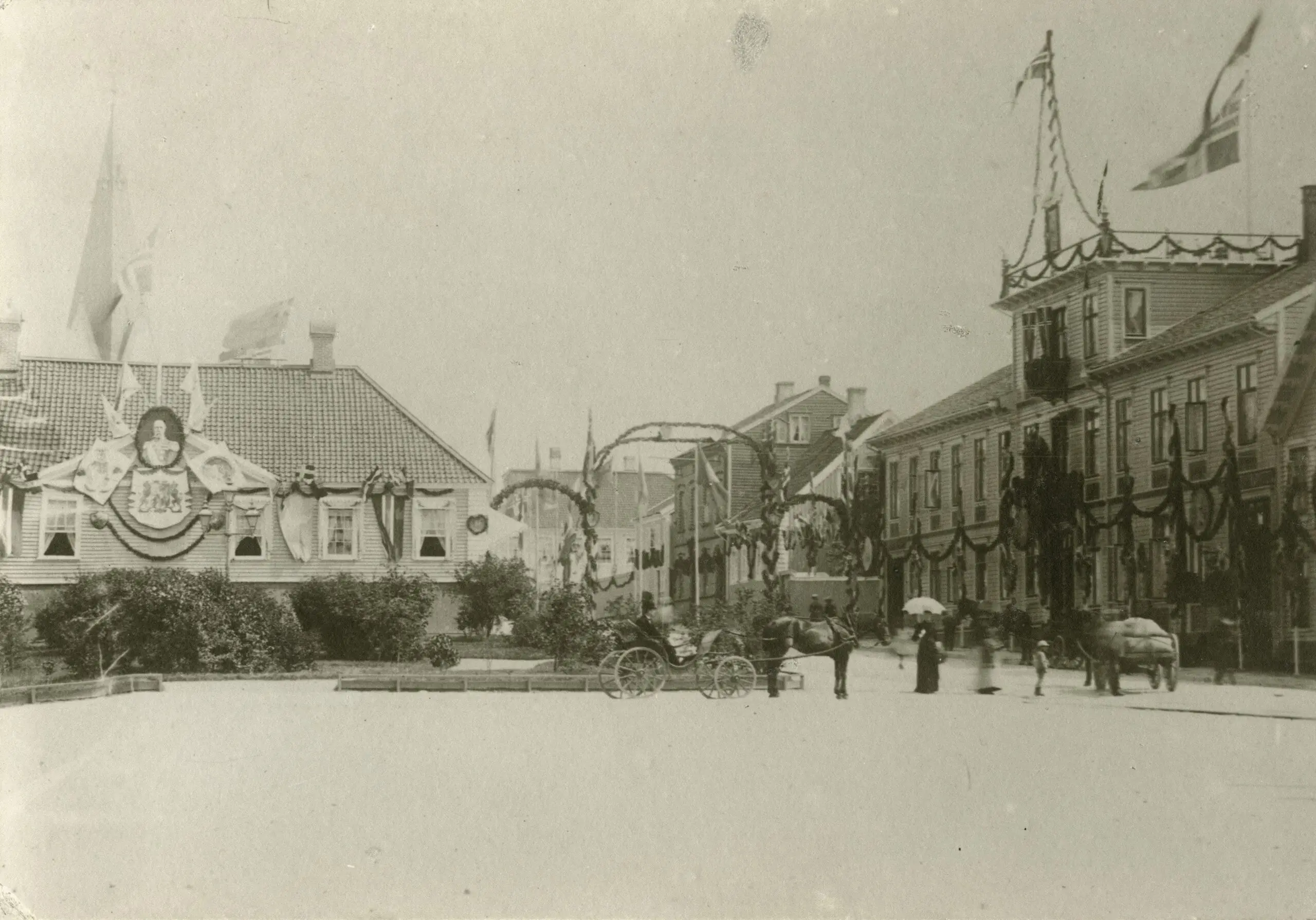
In 1892, the fourth and until now last major city fire ravaged the city. A third of the city burned down, and 4,000 people became homeless. The northern boundary of the fire ran along Rådhusgata (City Hall Street), hence the Stock Exchange just escaped the fire. On the other side of the street, the Ernst hotel burned down, and to prevent a new city fire, there was a city wide order to rebuild in brick. In 1898, the Stock Exchange Committee chose to rebuild the house and then gave it a pillared entrance at the front. This gave one of the city’s southernmost wooden houses a brick feel.
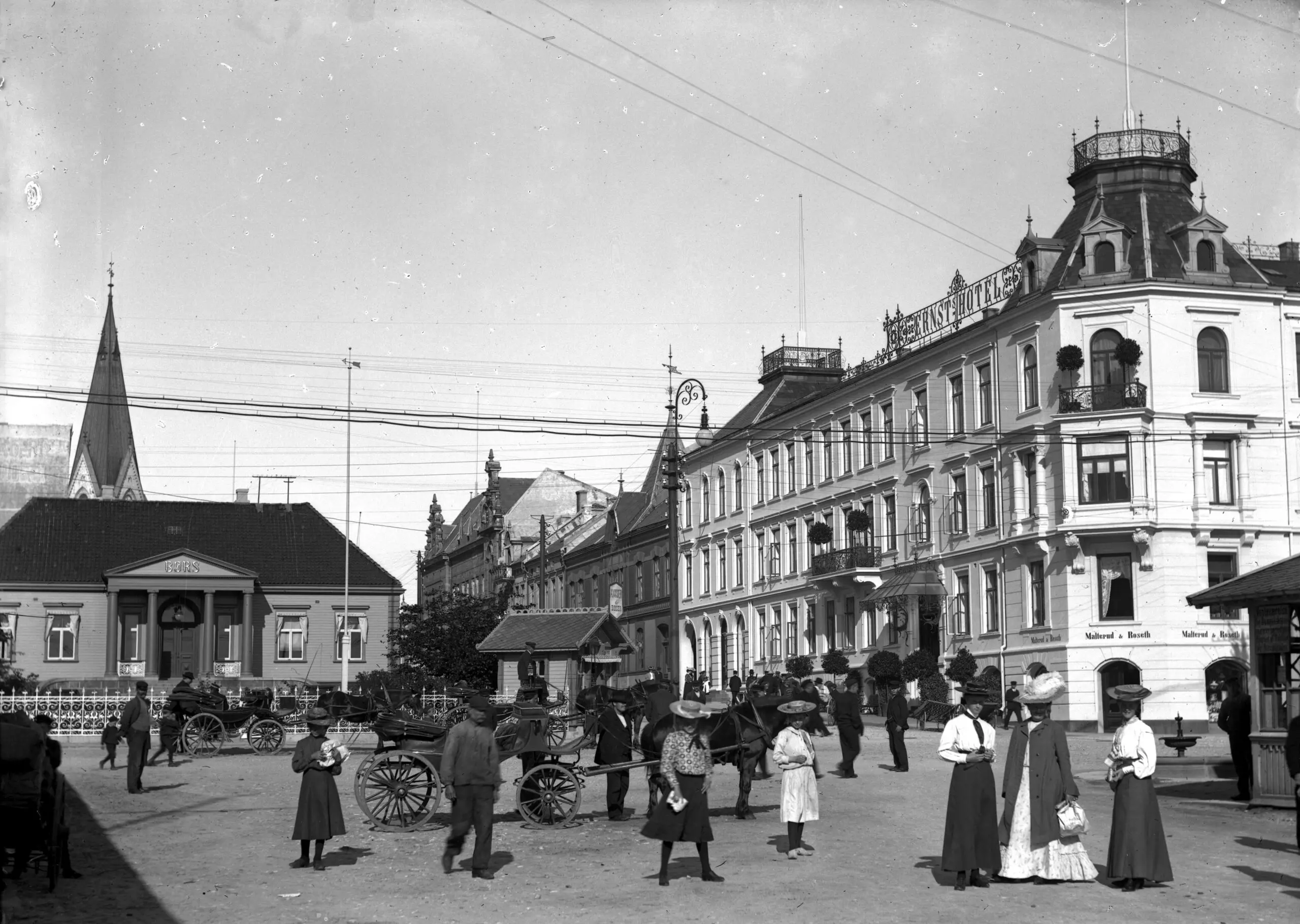
Matthiessen’s garden
Consul Matthiessen’s garden was known as the city’s most beautiful terraced garden. However but all ordinary people could see was the Golden rain and Common Lilacs hanging over the white plank fence that surrounded the garden. In the garden there was a Snowball tree, White lilies and more, including walkways that wound asymmetrically along the flower beds. When the Stock Exchange Committee took over the garden and opened it, they replanted and provided the garden with wide gravel paths for the public. One of the new additions may have been the Copper beech tree that still stands in the park today.
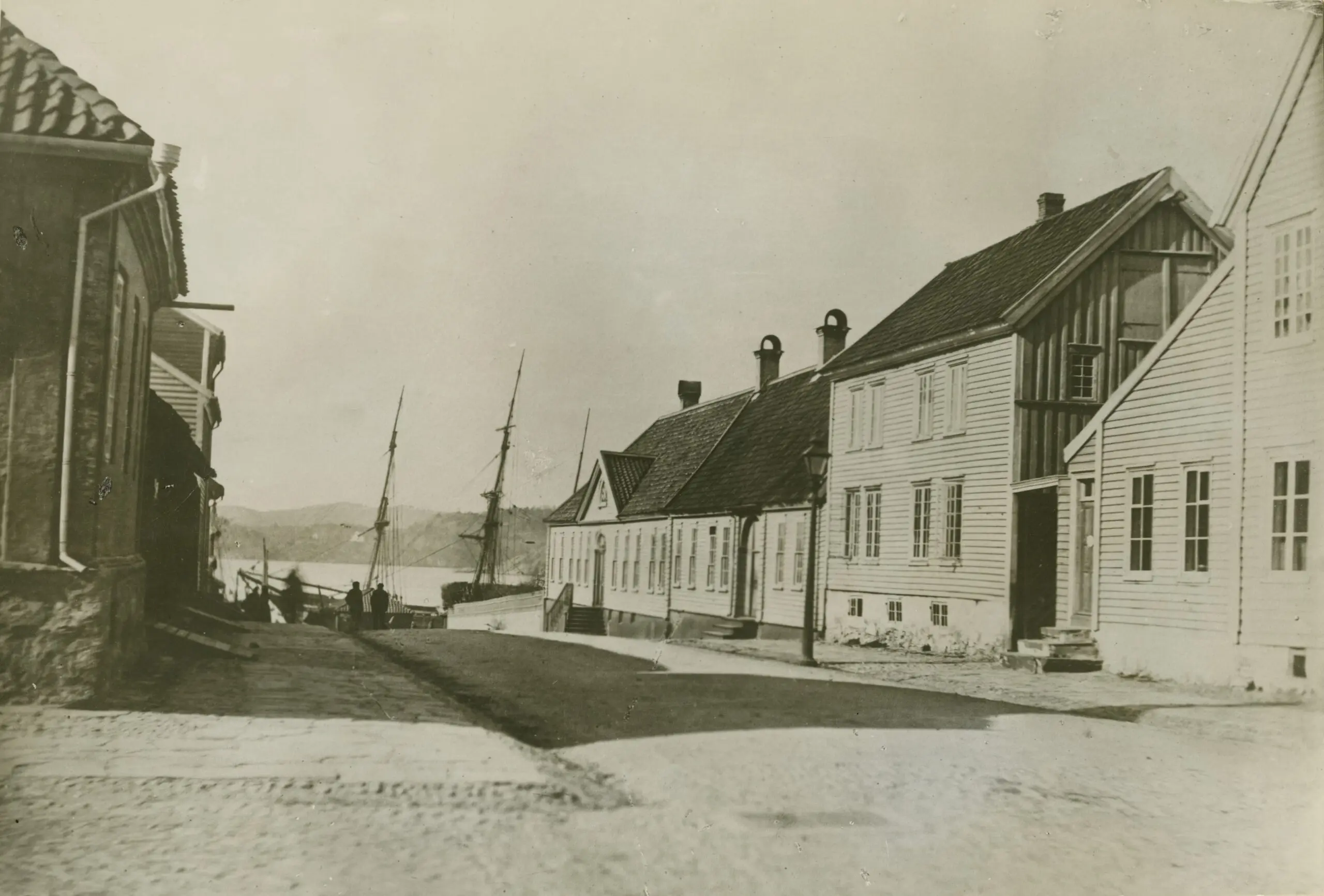
The pavilion and kiosk
In what became known as Børsparken there were two small buildings. One was known as Børspaviljongen and was built by Matthiessen around 1825. The other, Børskiosken, was set up in 1896. They stood next to each other on the west side of the park until 1906. The park was then changed, and the pavilion was given to the predecessor of Kristiansand Museum, «Christiansand Folkemusæum». The kiosk, on the other hand, was moved to the corner where it stood until 1938. Today, the buildings are reunited in Bygada at Kristiansand Museum.
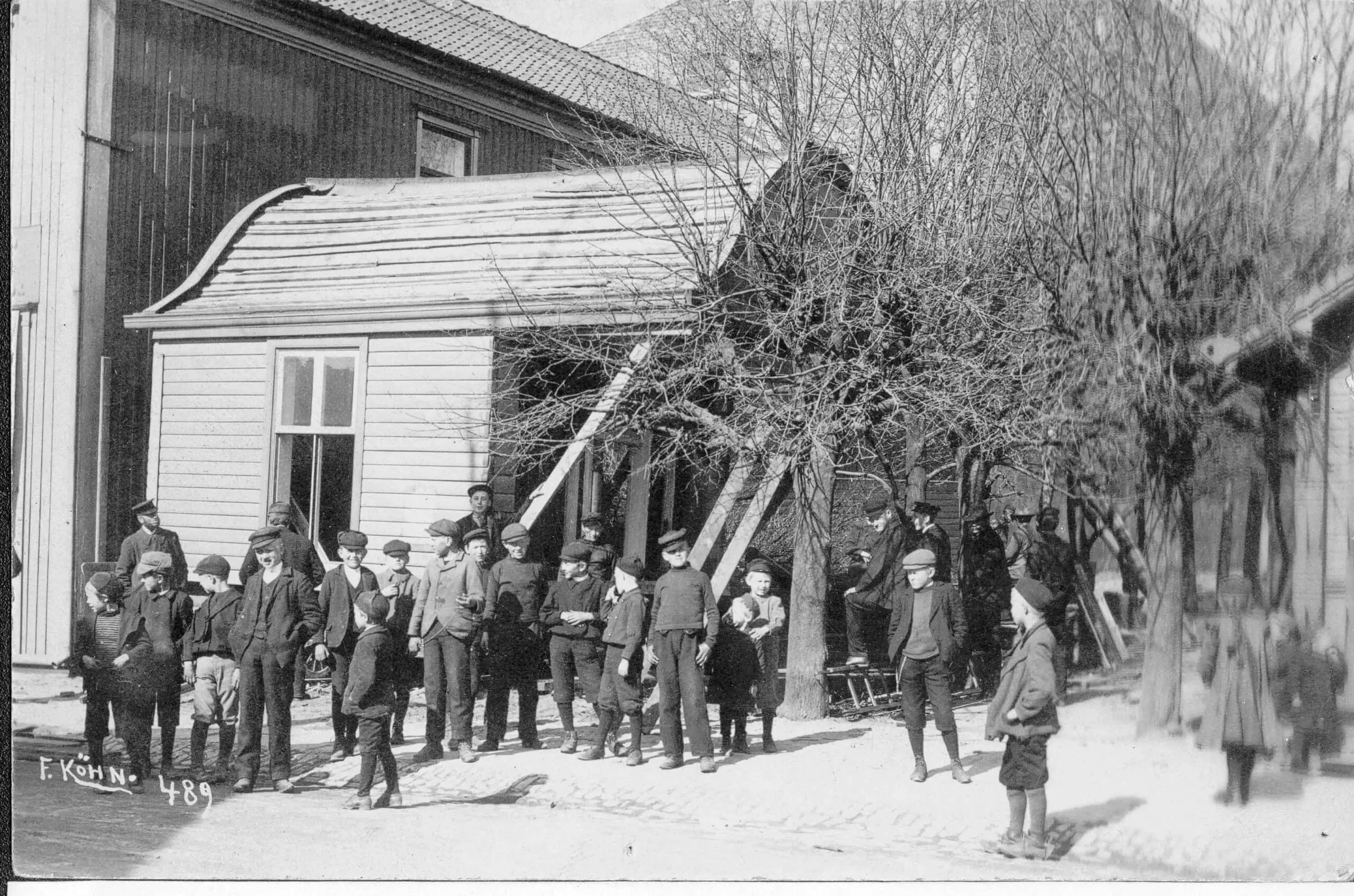
Kommunebryggen «Municipal pier»
In 1874, the municipality bought the wharf site from Consul Matthiessen. The era of sailing ships was coming to an end, and the new steamships needed larger wharves than the many small private wharves in Kristiansand. Therefore, the «Kommunebryggen» was built just above Børsparken, this contributed to Børsparken becoming the actual entrance to the city from the sea. Here the America boat docked and brought numerous norwegian southerners across the «pond» to USA.
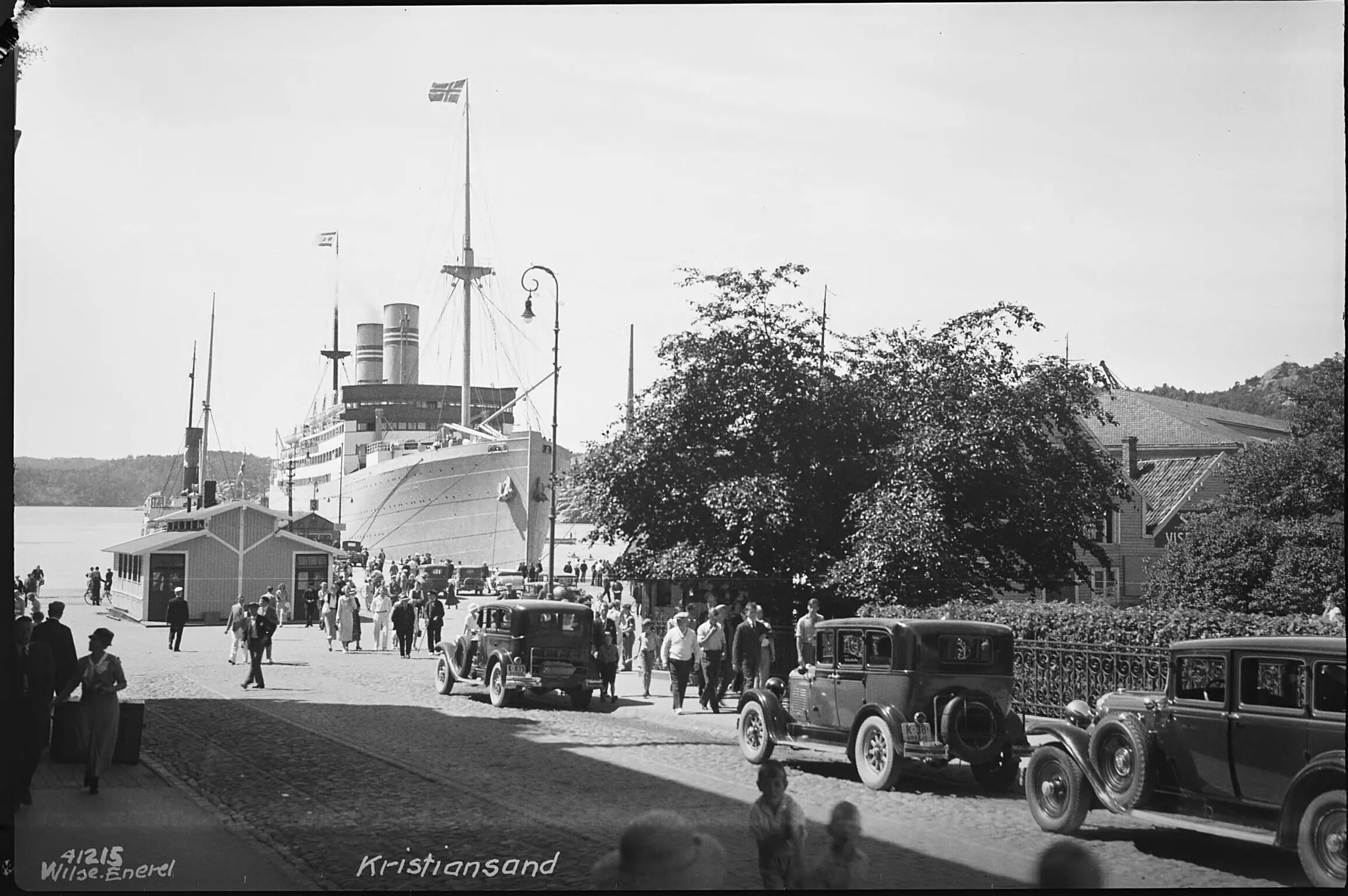
Today
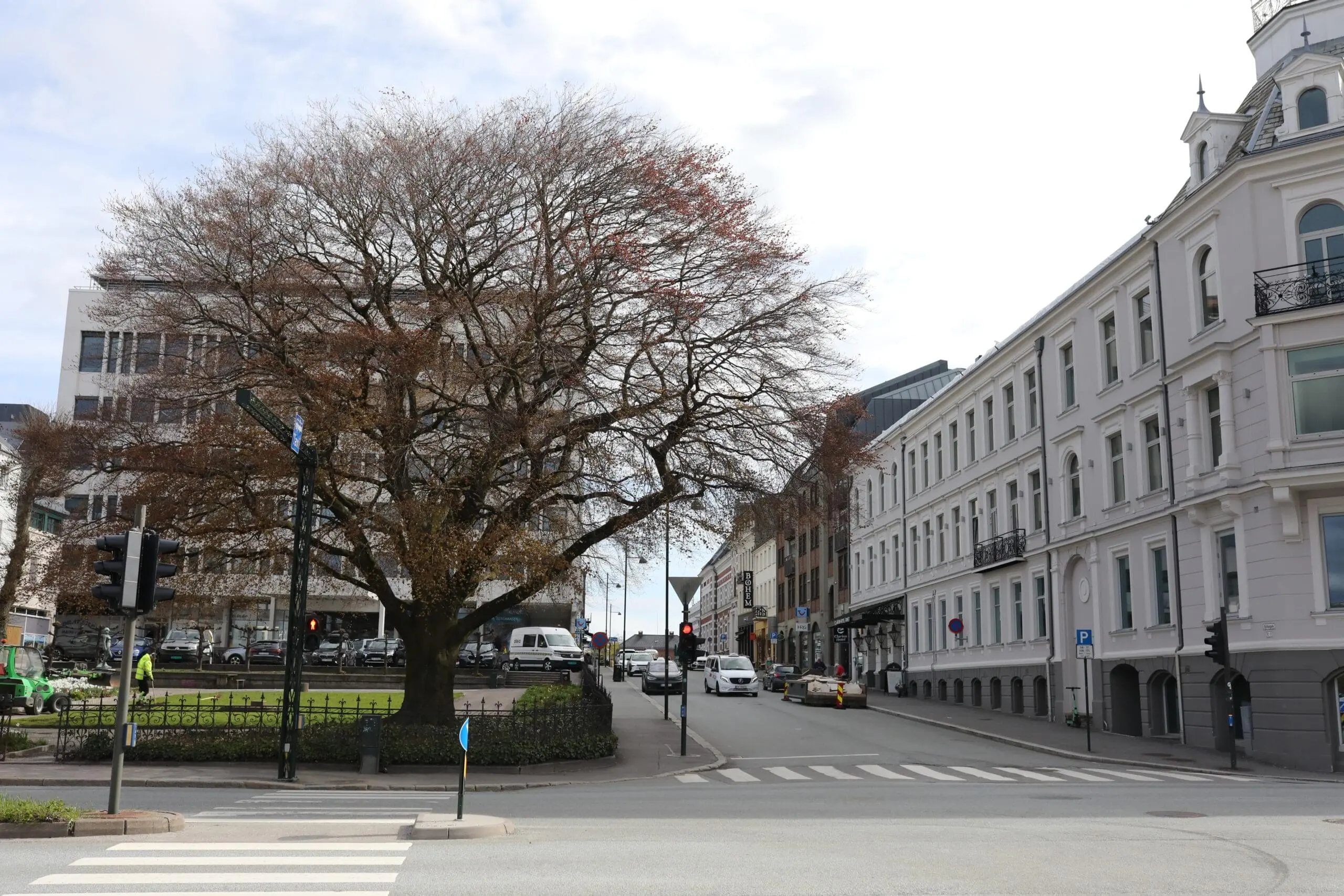
A lot has changed around Børsparken since it was built. The stock exchange was demolished in 1965 to make room for Handelens Hus (the house of commerc), and the Kommunebryggen has been replaced with a more practical ferry port at Hampa at Gartnerløkka. Around 2010, the Copper beechtree on the corner between Rådhusgata and Vestre Strandgate was threatened by plans for an entrance to a new parking garage. It caused major protests in the city and the tree was allowed to stand. Today the park appears forgotten by many, and there are few signs of how important and wonderful it was in it`s heyday.
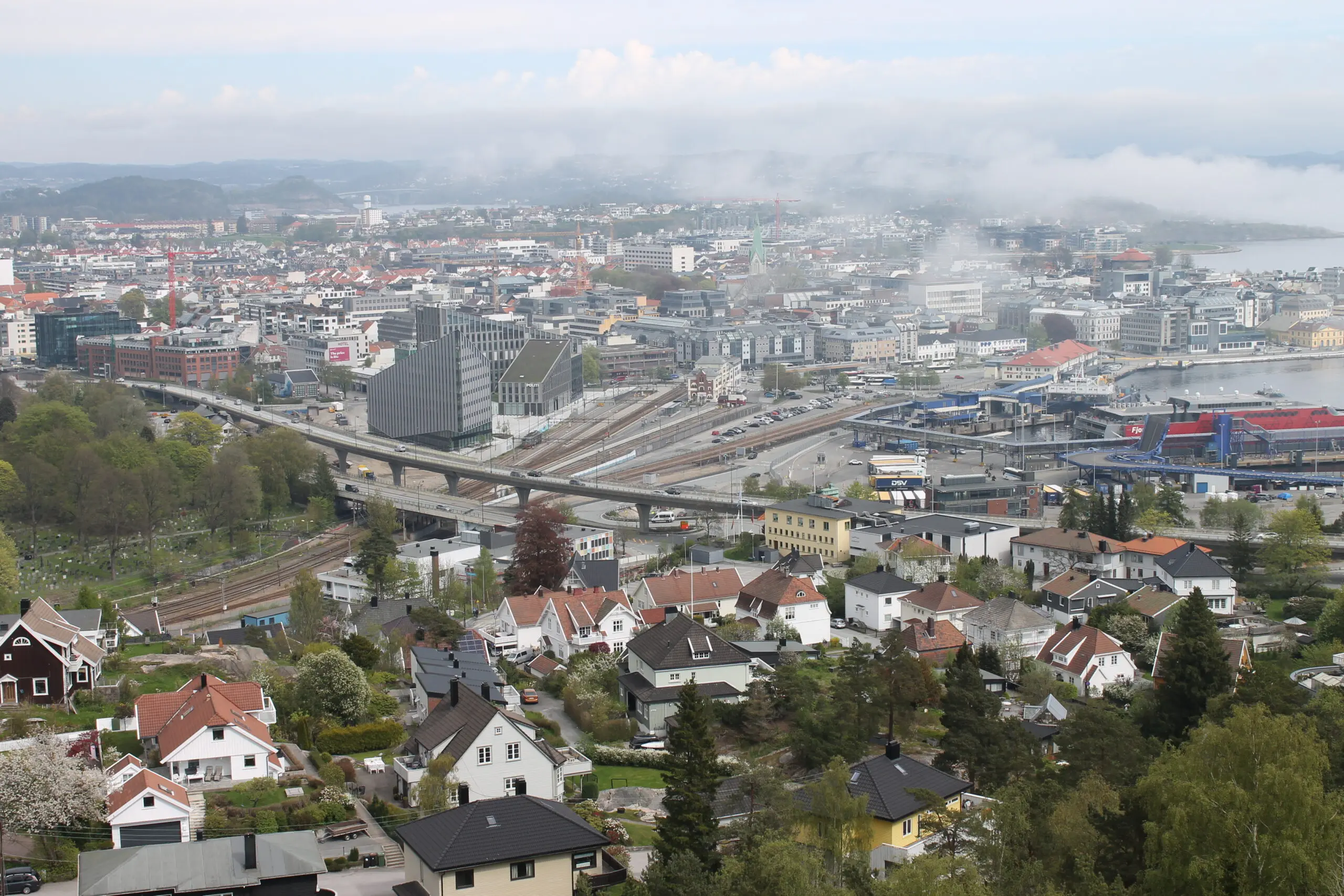
Artifacts
Travel office from around 1900
Travel office with inkwell and stamp that once belonged to former ship owner and sailor Ole Jørgen Olsen who lived at Henrik Wergelandsgate 24. He owned at most 13 sailing ships and a brickyard where the old Kristiansand stadium is located.
American suitcase from approx. 1930
Suitcase used on a trip with the Norwegian American Line (NAL) from Kommunebryggen in Kristiansand to the USA.
«Pompadur» (purse) from 1810
The bag is made by Mrs Marbella Moe approx. 1810. She was married to consul Niels Moe and lived in the patrician house Vestre Strandgate 24.
Chair believed to be from 1800-1830 from Germany
Consul Christian Matthiessen bought the chair in 1847 and placed it in his property at Rådhusgaten 3. It was in the building when it was converted into Kristiansand Børs, but the chair was sold in 1910.
